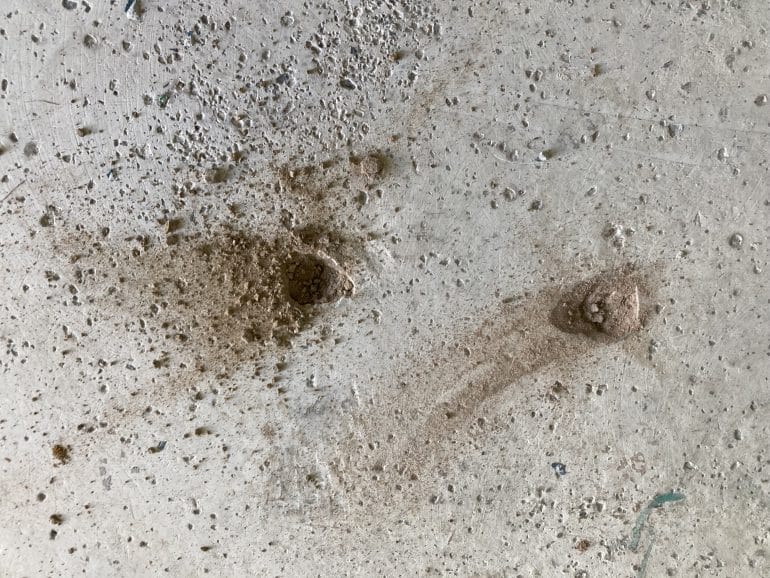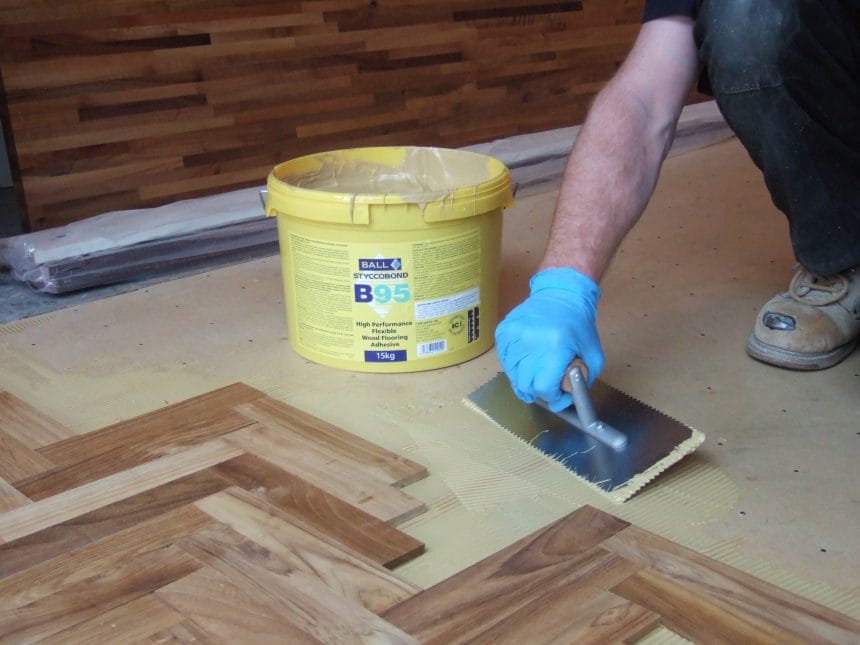Sticky Situations
F. Ball technical service officer Jason Tatton relays a solution provided by the company’s technical service team to avoid completely removing and replacing a weakened screed.

When preparing to install floorcoverings, contractors may discover the base below is weak or friable – often the result of poor installation or curing techniques. Previously, a weak or damaged screed would have to be entirely removed by mechanical means and a new screed installed. Now, providing the subfloor is in a reasonable condition, contractors have a less costly and disruptive option: in most cases, a weak or friable screed can be prepared with a surface reinforcement system (SRS).
This was the situation when one of our regional technical representatives was called to give advice on remedial action where a luxury vinyl tile (LVT) installation throughout the ground floor of a new-build residential property had begun to debond from the subfloor. The area totaled about 65m2 and included the lounge, hall, open-plan kitchen and dining room, utility room and WC.
Site inspection
Upon the removal of floorcoverings, a layer on the underside was visible that was consistent with laitance, the crust of fine particles formed on the surface of a screed as it dries. This should have been removed and was doubtless a factor contributing to the floor failure. Under the laitance, the 75mm-thick concrete base was weak and sandy and could easily be scratched away to reveal the aggregate.
Added to that, an indicative moisture test showed that subfloor moisture levels were around the threshold for floorcoverings being installed and risking excess subfloor moisture attacking adhesives and causing floor failure. BS 8203, Code of practice for installation of resilient floor coverings Annex B states that resilient floorcoverings should not be installed where humidity levels in the subfloor are above 75% relative humidity without a moisture management solution in place.
Resolution
Based on the above information, we were able to recommend the following course of action.
Firstly, the layer of laitance would need to be removed along with any surface contamination by mechanical means, and vacuumed to leave a smooth, clean surface.
F. Ball’s Stopgap SRS surface reinforcement system could then be used to strengthen the concrete surface. The two-component epoxy resin reinforcement material is designed to quickly stabilise and reinforce weak sand/cement or calcium sulphate screeds. Contractors simply mix the components thoroughly, pour the mixture over the weak subfloor and spread out with a rubber squeegee, working into the surface until no more liquid is absorbed. The product penetrates the weak/friable surface, filling voids and cracks and binding loose particles to strengthen the screed.
Fast-track option
Stopgap SRS acts rapidly, meaning weak screeds can be reinforced overnight to provide a base suitable for the receipt of other subfloor preparation products. It can also be used over certain screeds containing high levels of construction moisture prior to the application of a waterproof surface membrane.
Depending upon how weak or porous the screed appears, contractors could conduct a test to determine the likelihood of success prior to the use of a surface reinforcement system. In Situ Crushing Resistance (ISCR) tests, using a BRE screed tester to BS 8204, are typically used for these purposes. This test should not be undertaken where an underfloor heating test is present as this could risk damaging the system in place.
Moisture management
Within 24 hours of Stopgap SRS curing, F. Ball’s Stopgap F77 waterproof surface membrane could be applied to the surface and rolled with a roller that has been coated with the liquid to achieve a continuous, pin-hole free finish, before allowing it to cure.
It was recommended that the surface was then primed using F. Ball’s Stopgap P141, which is designed to create a textured finish to enhance bond performance between smoothing compounds and non-absorbent surfaces, such as epoxy waterproof surface membranes.
Final steps
Flooring contractors could then apply a suitable floor smoothing compound to create a perfectly smooth base for floorcoverings and optimise the appearance of the finished installation.
Finally, we recommended that floorcoverings were installed using a compatible adhesive. Where LVTs will be installed in areas where high temperatures and extreme temperature fluctuations are likely, such as in the kitchen-dining room with patio doors, potentially resulting in solar gain, the use of a temperature tolerant, pressure sensitive adhesive, such as F. Ball’s Styccobond F49, is advisable.
The solvent-free, water-based adhesive develops the ultra-high bond strength to hold floorcoverings firmly in place when exposed to temperature fluctuations from -20°C up to +60°C. The pressure sensitive characteristics of the adhesive, crucially high initial tack, would also help with the positioning and alignment of floorcoverings.
After following the recommended subfloor preparation procedures, the flooring contractor can expect not to be called back to the site any time soon.
If you require site support then please contact your local F. Ball technical representative.

